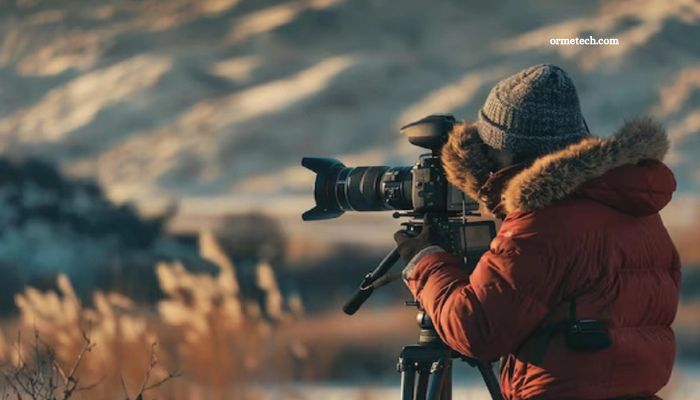In photography, mastering light manipulation is key to crafting visually compelling images. Among the most striking effects is lens flare, a technique that adds both drama and artistic flair to photos. The Photeeq lens flare, in particular, has gained popularity for its ability to infuse photographs with a distinctive, creative glow.
This tool merges technical precision with artistic vision, allowing photographers to elevate their work in new ways. In this article, we will delve into the unique qualities of Photeeq lens flare, how it can transform your photos, and provide expert tips on how to incorporate this captivating effect into your photography.
Read More: 5StarsStocks.com: Comprehensive Guide to Dividend Stocks
What Is Lens Flare?
Lens flare appears when bright light sources, such as the sun or artificial lights, directly impact a camera lens and cause light to scatter. This phenomenon creates visible artifacts in the image, often taking the form of rings, halos, or streaks. Some photographers treat lens flare as a flaw, seeking to eliminate it. However, many embrace it as a creative tool, using it to add depth, atmosphere, and emotional richness to their photography.
The Beauty of Photeeq Lens Flare
Photeeq lens flare represents a refined approach to this natural effect, crafted specifically to enhance a photograph’s visual appeal. It features soft, diffused streaks of light that convey warmth and an ethereal quality. Incorporating Photeeq lens flare can elevate an ordinary image into a captivating piece, drawing viewers in and creating a deeply immersive experience.
The Science Behind Lens Flare
Understanding Photeeq lens flare begins with the basics of light behavior and optics. When light enters a camera lens, it can reflect off internal lens elements, producing visible flare effects. Lens construction—including the shape, coatings, and number of glass elements—directly influences how flare manifests in an image.
Brightness and light angle also play critical roles in determining the intensity and color of the flare. A low sun during golden hour often generates a warm, gentle flare, enhancing the mood of a photograph. In contrast, a strong midday sun tends to create a sharper, more pronounced flare, adding a bold, dynamic element to the scene.
The Artistic Value of Photeeq Lens Flare
Photoeq lens flare offers more than aesthetic enhancement; it serves as a powerful storytelling tool that evokes emotion and deepens visual narratives. Several creative advantages make it a valuable addition to any photographer’s toolkit:
Creating Atmosphere
Soft, diffused Photoeq lens flare introduces a dreamlike quality to landscapes, portraits, and urban scenes. This ethereal atmosphere can heighten emotional resonance, pulling viewers deeper into the story captured within the frame.
Guiding the Viewer’s Eye
Strategically placed lens flare can direct the viewer’s gaze, emphasizing key elements and enhancing the overall composition. Light artifacts naturally attract attention, making them effective guides through the visual narrative.
Adding Depth
Creative use of lens flare adds dimensionality to photographs, transforming flat images into dynamic compositions. Layers of light and shadow create movement and depth, engaging the viewer on a more immersive level.
Enhancing Color
Photoeq lens flare often enriches an image with additional color harmonies, from warm golden tones to cool blue highlights. The interplay of scattered light intensifies the visual richness, creating a vibrant, emotionally charged scene.
How to Incorporate Photeeq Lens Flare into Your Photography
Mastering Photeeq lens flare requires both an understanding of light and a creative approach to composition. Practical techniques can help you integrate this captivating effect seamlessly into your images.
Choose the Right Conditions
Optimal lens flare emerges in challenging lighting, especially when bright sources appear in or near the frame. Golden hour, with its low-angle sunlight or the ambient glow of city lights at dusk, offers ideal conditions. Aim for a balance that enhances flair without overpowering your subject.
Experiment with Angles
Camera angle plays a pivotal role in the look of lens flare. Adjusting your perspective—moving higher, lower, or altering the tilt of the camera—can produce varying effects. Explore different compositions to discover the most striking results aligned with your artistic vision.
Utilize Lens Flare in Post-Processing
Natural lens flare often brings authenticity, yet post-processing offers additional creative flexibility. Editing tools in Adobe Lightroom, Photoshop, and other software allow you to customize flare effects. Apply enhancements carefully to complement rather than distract from the subject.
Incorporate Filters
Physical filters, such as UV or polarizers, alter how light interacts with your lens. Experimenting with different filters can soften, intensify, or even modify flare patterns, giving you greater creative control during shooting.
Focus on Composition
Lens flare should serve the overall composition, not dominate it. Techniques like the rule of thirds, leading lines, and strategic framing help maintain strong focal points while using Photeeq lens flare as a supportive artistic element.
Frequently Asked Questions
What is Photeeq lens flare?
Photeeq lens flare refers to a stylized effect where scattered light within a lens creates artistic streaks, halos, or glows in a photograph. It enhances images by adding warmth, atmosphere, and visual storytelling elements.
How is Photeeq lens flare different from natural lens flare?
While natural lens flare occurs organically from direct light entering the camera, Photeeq lens flare typically involves refined techniques or digital enhancements that produce a softer, more controlled, and aesthetically pleasing effect.
When is the best time to capture Photeeq lens flare naturally?
Golden hour—shortly after sunrise or before sunset—offers the best natural lighting conditions. The low angle of the sun produces soft, warm flares that complement a wide range of subjects and compositions.
Can Photeeq lens flare be added during post-processing?
Yes, software like Adobe Lightroom and Photoshop allows you to add or enhance lens flare effects. Many photographers combine natural flares with subtle digital enhancements for a polished final image.
Does lens quality affect Photeeq lens flare?
Lens construction significantly impacts the appearance of flare. High-quality lenses with special coatings can minimize unwanted artifacts, while older or specialized lenses may create more pronounced and artistic flares.
What subjects benefit most from Photeeq lens flare?
Portraits, landscapes, and urban scenes often benefit from Photeeq lens flare. It adds emotional depth, enhances mood, and draws viewers’ attention to key elements within the frame.
Conclusion
Photoeq lens flare offers photographers a powerful way to infuse their images with emotion, atmosphere, and artistic depth. By understanding how light interacts with your lens, experimenting with different conditions, and skillfully incorporating flare into your compositions, you can elevate ordinary scenes into captivating visual stories.
Whether captured naturally or enhanced in post-processing, Photeeq lens flare serves as a reminder that mastering light is at the heart of creating truly memorable photography. Embrace its potential, and let the magic of light transform your creative vision.





